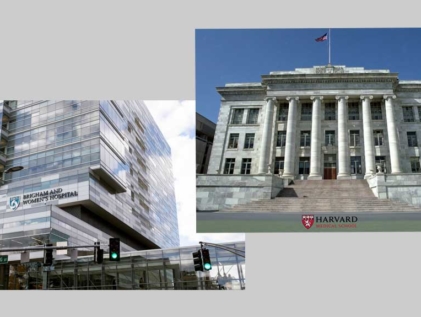Our occasional series on our Four Pillars of Engagement programming continues this week with a focus on cognitive function, and how it is supported and enhanced across all LCB communities. Created in collaboration with Harvard Medical School and Brigham and Women’s Hospital, our Cognitive Pillar programming is grounded in the belief that the brain is designed to never stop learning. Whether living independently, in assisted living, or memory care, all LCB residents are provided with constant learning opportunities designed to stimulate brain health and promote overall wellbeing. To get a closer look at what cognitive programming looks like in Memory Care, we sat down this week with Sandi Hart, Reflections Director at The Residence at Brookside in Avon CT:
When a new resident joins the community, how does your staff identify interests and preferences you can later engage them in?
When we welcome a new resident, their family is asked to fill out a personal history and preference form; that acts as a great starting point for us. It teaches us about the family, their personal history and former occupation, as well as likes/dislikes and personal accomplishments. We also learn about their daily routine, which is critical to helping us keep to as normal schedule as possible for that resident. The questionnaire also teaches us how that person responds to pain, hunger, and stress. It is actually a very important piece of the puzzle. And of course, the first 30 days are hugely informative for all of us as to getting to know that new community member.
LCB’s cognitive pillar of engagement is grounded in an intention to provide residents with endless learning opportunities. What does that look like on a typical day at Brookside?
At Brookside the cognitive pillar of engagement is a cornerstone of the day, with cognitive stimulation activities planned each morning and afternoon. Some cognitive activities are trivia related, with simple choices designed to produce positive outcomes; others are science-focused, built around mini guided projects; others are history or geography-based, such as our travel club. We often will use a cognitive activity as a springboard to fold in the other engagement pillars (social, emotional, and physical). So for example, our travel club might meet to learn about a foreign country and its history. We’ll then cook something from that country’s tradition, or learn a native song (tapping into the emotional pillar). The social aspect will come in, perhaps, through a Happy Hour we organize around the food we made. And we’ll organize a physical activity like an exercise or a game from that country.
We want all residents to feel successful in their learning and no answers or expressions are ever wrong – in fact, they’re often interesting and instructive. My nickname is “The Teacher” to keep the mood light and emphasize an environment of openness and learning.
What are some ways that the staff successfully provides these opportunities while meeting the challenges of cognitive impairment?
We often will offer information to residents on multiple platforms, depending on their learning issues and styles. So we might read to them, or have them read to us; we also will use YouTube videos and online materials to provide visual enhancement to what we’re all learning together. We’ll have discussion groups where residents can take part on a conversation and learn from one another; we’ll often show pictures in these groups as springboards for interchange. We find that adding that visual element is often a memory and conversation trigger that helps strengthen the connections within the group.
Can you share some examples of positive outcomes with us?
Some may seem small in cognitive pursuits as opposed to emotional or physical, which are involving a different part of the brain. But there really is no such thing as a small accomplishment when it comes to Memory Care. It’s empowering for a resident to learn where their room is, or where the dining room is – that usually happens within about a month. It’s encouraging for residents to tap into areas they know from their past professional life, for example, and build on those. One person who comes to mind had been an actuary; and when he would struggle a bit with certain aspects of memory recall, he would feel so good and encouraged when redirected to talking about numbers and equations, where his cognitive function was strong and could be built upon. It’s really all about connecting with residents and tapping into cognitive strengths to create positive experiences.
What about your role at Brookside gets you out of bed in the morning?
I love my job because our community members give me a sense of purpose. I know we are supposed to give that to them but they give me so much. Just thinking about their smiles and how happy they are to see me makes my day! Everyday of our lives is special and I’m grateful to share that with our residents.

